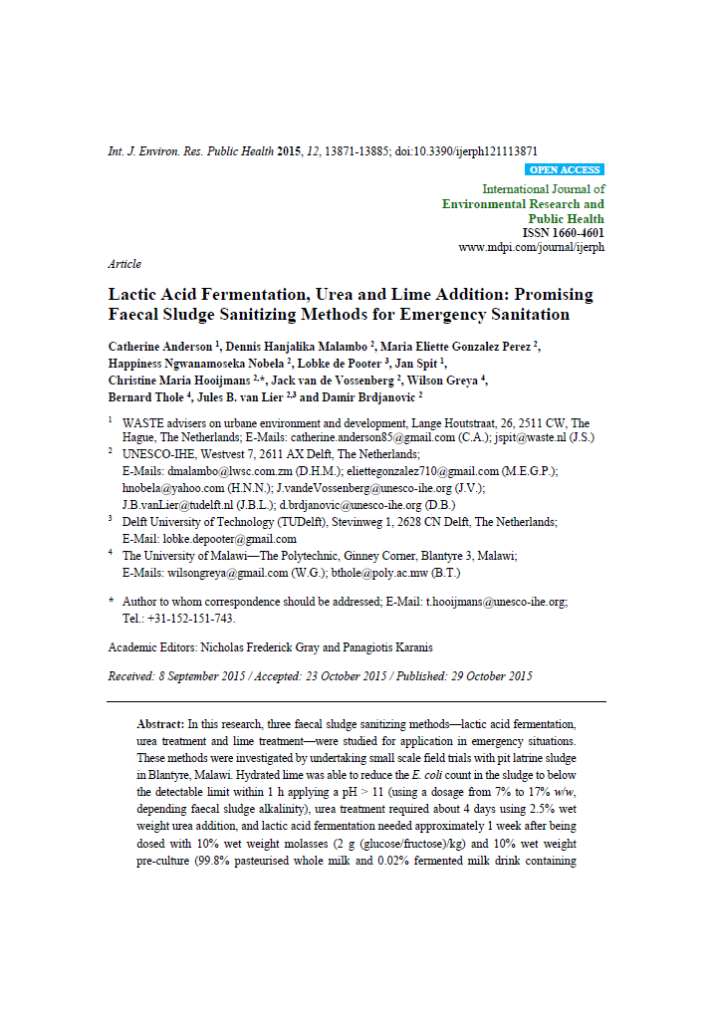Lactic Acid Fermentation, Urea and Lime Addition - Promising Faecal Sludge Sanitizing Methods for Emergency Sanitation
Author: Anderson, C., Malambo, D. H., Perez, M. E., Nobela, H. N., de Pooter, L., Spit, J., Hooijmans, C. M., de Vossenberg, J. V., Greya, W., Thole, B., van Lier, J. B., Brdjanovic, D.
Year: 2015
Publisher: Environmental Research and Public Health Journal
In this research, three faecal sludge sanitizing methods—lactic acid fermentation, urea treatment and lime treatment—were studied for application in emergency situations. These methods were investigated by undertaking small scale field trials with pit latrine sludge in Blantyre, Malawi. Hydrated lime was able to reduce the E. coli count in the sludge to below the detectable limit within 1 h applying a pH > 11 (using a dosage from 7% to 17% w/w, depending faecal sludge alkalinity), urea treatment required about 4 days using 2.5% wet weight urea addition, and lactic acid fermentation needed approximately 1 week after being dosed with 10% wet weight molasses (2 g (glucose/fructose)/kg) and 10% wet weight pre-culture (99.8% pasteurised whole milk and 0.02% fermented milk drink containing Lactobacillus casei Shirota). Based on Malawian prices, the cost of sanitizing 1 m3 of faecal sludge was estimated to be €32 for lactic acid fermentation, €20 for urea treatment and €12 for hydrated lime treatment.
Lactic Acid Fermentation, Urea and Lime Addition - Promising Faecal Sludge Sanitizing Methods for Emergency Sanitation
Rating
Would you like to see other resources here?
Give us your feedback"*" indicates required fields
Still have questions?
You could not find the information you were looking for? Please contact our helpdesk team of experts for direct and individual support.


